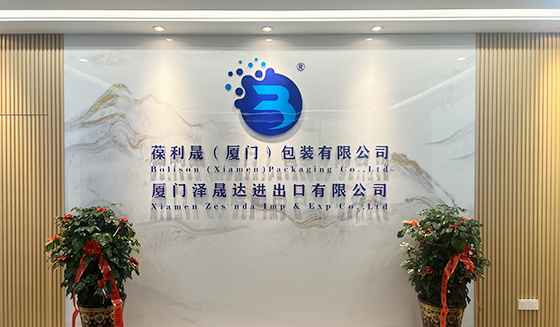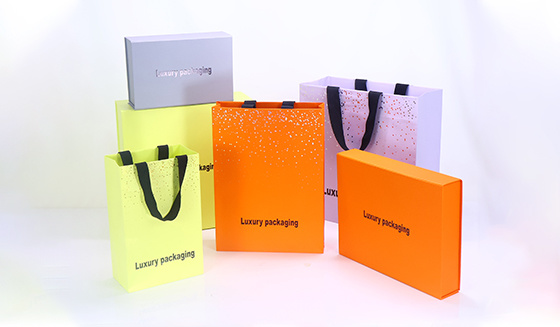18
2025
-
06
How to Design Eye-Catching Custom Packaging Bags for Food
How to Design Eye-Catching Custom Packaging Bags for Food Table of Contents Understanding the Importance of Custom Packaging Bags in the Food Industry Key Elements of Eye-Catching Packaging Design Choosing the Right Materials for Food Packaging Incorporating Brand Identity into Packaging Design Practical Tips for Designing Custom Packaging Bags Sustainable Packaging Soluti
How to Design Eye-Catching Custom Packaging Bags for Food
Table of Contents
- Understanding the Importance of Custom Packaging Bags in the Food Industry
- Key Elements of Eye-Catching Packaging Design
- Choosing the Right Materials for Food Packaging
- Incorporating Brand Identity into Packaging Design
- Practical Tips for Designing Custom Packaging Bags
- Sustainable Packaging Solutions for Food Products
- The Role of Typography and Graphics in Food Packaging
- Case Studies: Successful Custom Packaging Designs in the Food Sector
- Frequently Asked Questions (FAQs)
Understanding the Importance of Custom Packaging Bags in the Food Industry
Custom packaging bags play a pivotal role in the food industry by not just serving as a vessel for the product but also as a marketing tool. The **visual appeal** of food packaging can greatly influence consumer decisions; therefore, designing attractive bags can enhance brand visibility and customer loyalty. A well-crafted packaging design can convey the quality of the product and create a memorable experience that encourages repeat purchases.
Key Elements of Eye-Catching Packaging Design
Designing eye-catching packaging requires a **strategic approach** that balances aesthetics with functionality. Here are some key elements to consider:
2.1 Color Scheme
Colors evoke emotions and can significantly impact purchasing behavior. For food packaging, vibrant and appetizing colors can stimulate taste and allure customers. Consider the psychology of colors and choose shades that resonate with your brand and the type of food you're selling.
2.2 Shape and Structure
The shape of the packaging can differentiate your product on the shelf. Unique designs such as stand-up pouches or eco-friendly shapes can catch the consumer's eye. Consider how the shape not only attracts attention but also accommodates the product securely.
2.3 Practicality and Functionality
While aesthetics are crucial, practicality should not be overlooked. The packaging must protect the food, maintain freshness, and be easy to handle. **Convenience features** such as resealable zippers or easy-to-open designs can enhance user experience.
Choosing the Right Materials for Food Packaging
Selecting the appropriate materials is a crucial step in the design process. The choice of material impacts the packaging's functionality, sustainability, and aesthetic appeal.
3.1 Types of Materials
Common materials used in food packaging include paper, plastic, and biodegradable options. Each material has its advantages and suited applications:
- **Paper Bags**: Ideal for dry foods and provide a natural look that resonates with eco-conscious consumers.
- **Plastic Bags**: Highly versatile and can be designed for various food types, including liquids. However, concerns about sustainability may arise.
- **Biodegradable Materials**: Increasingly popular due to environmental awareness, these materials offer a sustainable alternative without compromising on design.
3.2 Food Safety Standards
When selecting materials, ensuring compliance with food safety standards is imperative. Materials should be non-toxic and appropriate for food contact, to guarantee consumer safety and brand integrity.
Incorporating Brand Identity into Packaging Design
Your packaging should act as a **brand ambassador**, reflecting your brand’s identity and values. Here’s how to effectively communicate your brand through packaging design:
4.1 Logo and Branding Elements
Ensure your logo is prominently displayed and easily recognizable. Additional elements such as taglines or brand colors should be consistently incorporated to reinforce brand identity.
4.2 Storytelling through Design
Packaging can tell a story about your product. Use imagery and text to communicate your brand's journey, values, or the origins of your ingredients. This narrative can create an emotional connection with consumers.
Practical Tips for Designing Custom Packaging Bags
Creating effective custom packaging involves several practical strategies:
5.1 Sketching and Prototyping
Start with sketches and create prototypes to visualize the design. This helps identify potential issues early on and allows for revisions based on feedback.
5.2 Consumer Testing
Engage your target audience through surveys or focus groups. Understanding consumer preferences can guide design adjustments, increasing the chances of market success.
5.3 Collaboration with Designers
Partnering with a professional designer can enhance the overall quality of your packaging. Designers bring expertise in aesthetics and functionality, ensuring that all elements work seamlessly together.
Sustainable Packaging Solutions for Food Products
Sustainability is becoming increasingly important in packaging design. Consumers are more inclined to choose brands that prioritize eco-friendly practices. Here's how to integrate sustainability into your custom packaging.
6.1 Use of Recyclable Materials
Choosing recyclable materials encourages consumers to think about their environmental impact and can enhance brand loyalty.
6.2 Minimalist Design
Adopting a minimalist approach not only looks modern but also reduces material usage. This strategy is both cost-effective and environmentally friendly.
The Role of Typography and Graphics in Food Packaging
Typography and graphics play a crucial role in conveying information and attracting attention.
7.1 Choosing the Right Font
Select fonts that are legible and reflect the personality of your brand. For gourmet food products, elegant typography can evoke sophistication, while playful fonts may work better for children’s snacks.
7.2 Effective Use of Imagery
High-quality images of your food can entice customers. Ensure that graphics are not only beautiful but also relevant, enhancing the narrative of your product.
Case Studies: Successful Custom Packaging Designs in the Food Sector
Examining successful examples of custom packaging can provide inspiration and insights into effective strategies.
8.1 Case Study: Blue Apron
Blue Apron’s packaging emphasizes sustainability and freshness, with biodegradable materials and vibrant graphics that highlight ingredients. Their design effectively communicates their brand ethos while appealing to eco-conscious consumers.
8.2 Case Study: Pringles
Pringles' iconic cylindrical packaging distinguishes it in the snack aisle. The design is not only eye-catching but also practical, preventing breakage of the chips. This successful blend of form and function demonstrates the power of good design in food packaging.
Frequently Asked Questions (FAQs)
9.1 What are the best materials for food packaging bags?
The best materials depend on the type of food being packaged. Common options include paper, plastic, and biodegradable materials, each with unique advantages.
9.2 How do I ensure my packaging is sustainable?
Choose recyclable or biodegradable materials, and consider adopting minimalistic design principles to reduce waste.
9.3 What elements make a packaging bag eye-catching?
A combination of vibrant colors, unique shapes, clear typography, and high-quality imagery can make packaging bags visually appealing.
9.4 How important is branding in packaging design?
Branding is crucial as it helps consumers recognize your product and fosters brand loyalty. The design should reflect your brand identity effectively.
9.5 Can I create my own packaging design?
Yes, many online tools and design software are available for creating custom packaging. However, collaborating with professional designers can enhance the overall quality and effectiveness of your design.
Conclusion
Designing eye-catching custom packaging bags for food is a multifaceted process that involves understanding consumer preferences, brand identity, and the practical aspects of packaging materials. By focusing on aesthetics, functionality, and sustainability, businesses can create packaging that not only attracts customers but also enhances their overall brand image. The right packaging can make a significant impact on consumer choices, making it a vital aspect of any food marketing strategy. Investing time and effort into thoughtful design will ultimately pay off in increased sales and customer loyalty.
custom packaging bags for food






